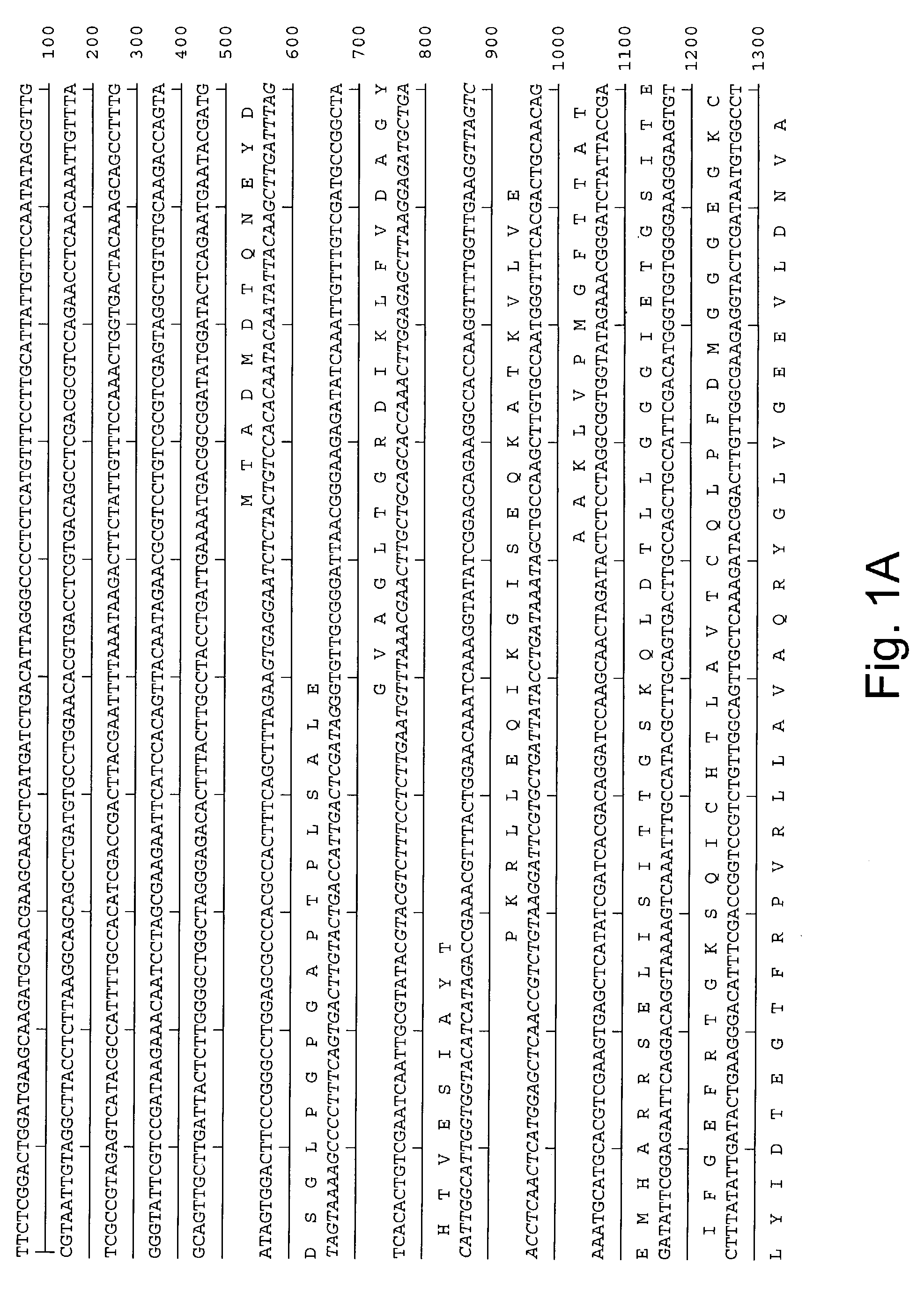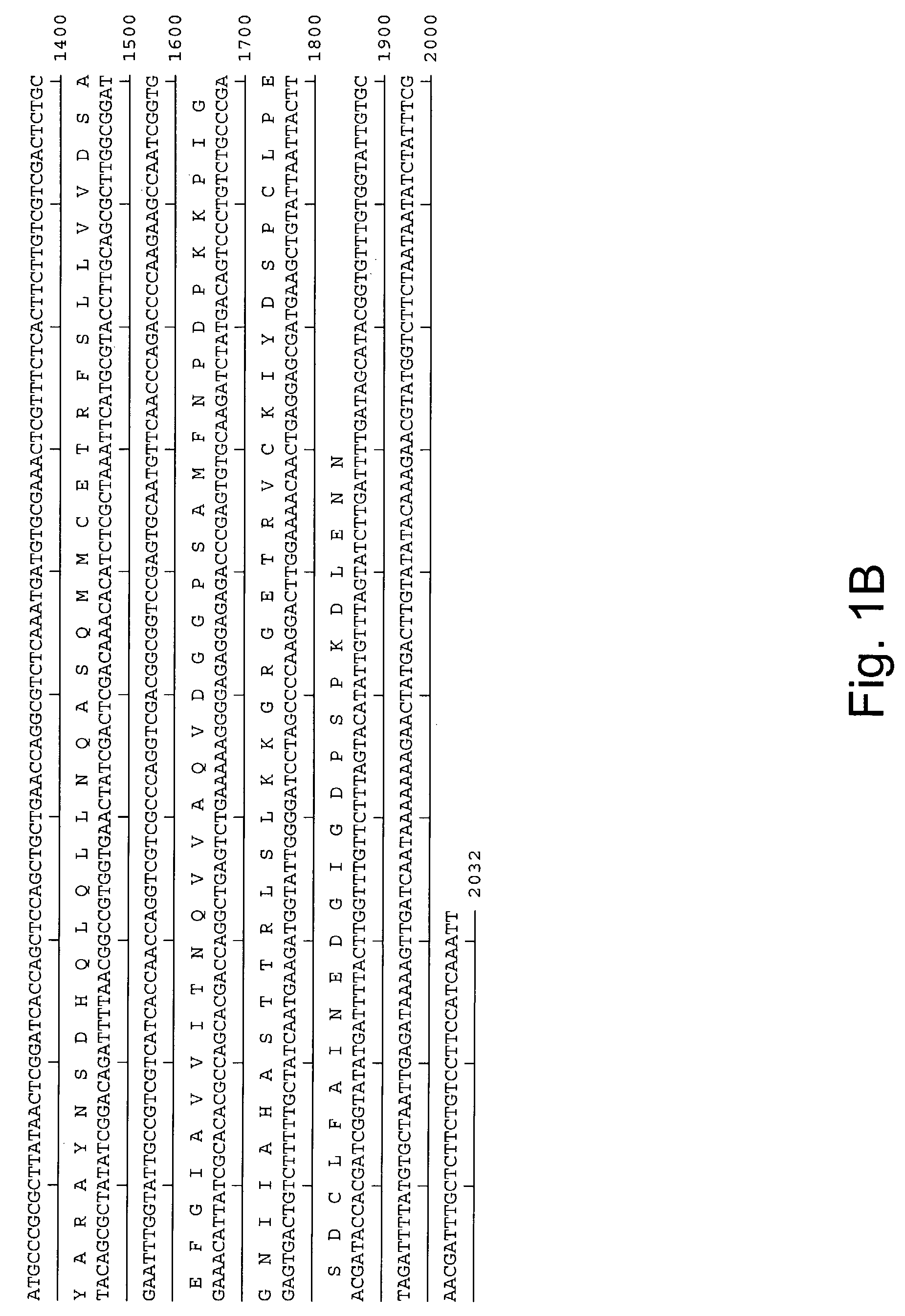Methods for increasing homologous recombination of a nucleic acid sequence
a nucleic acid sequence and recombination method technology, applied in the field of increasing the homologous recombination of the nucleic acid sequence, can solve the problems of error-prone non-homologous end joining, and achieve the effect of increasing the homologous recombination and promoting the one or two
- Summary
- Abstract
- Description
- Claims
- Application Information
AI Technical Summary
Benefits of technology
Problems solved by technology
Method used
Image
Examples
example 1
Aspergillus oryzae Genomic DNA Extraction
[0136]Aspergillus oryzae HowB101, Aspergillus oryzae HowB430, or Aspergillus oryzae HowB425 was grown in 25 ml of 0.5% yeast extract-2% glucose (YEG) medium for 24 hours at 37° C. and 250 rpm. Mycelia were then collected by filtration through Miracloth (Calbiochem, La Jolla, Calif.) and washed once with 25 ml of 10 mM Tris-1 mM EDTA (TE) buffer. Excess buffer was drained from the mycelia preparation which was subsequently frozen in liquid nitrogen. The frozen mycelia preparation was ground to a fine powder in an electric coffee grinder, and the powder was added to a disposable plastic centrifuge tube containing 20 ml of TE buffer and 5 ml of 20% w / v sodium dodecylsulfate (SDS). The mixture was gently inverted several times to ensure mixing, and extracted twice with an equal volume of phenol:chloroform:isoamyl alcohol (25:24:1 v / v / v). Sodium acetate (3 M solution) was added to the extracted sample to a final concentration of 0.3 M followed by ...
example 2
PCR Amplification of a Portion of the Aspergillus oryzae rdhA Gene
[0137]A portion of the Aspergillus oryzae rdhA (rad51 homolog A) gene was amplified by hemi-nested degenerate PCR. The first amplification employed degenerate primers 971514 and 971515, shown below, coding for amino acids DNVAYAR and MFNPDPK. Primer 971514 (DNVAYAR):5′-GAYAAYGTIGCITAYGCNMG-3′ (SEQ ID NO:7) Primer 971515 (MFNPDPK):5′-TTIGGRTCNGGRTTRAACAT-3′ (SEQ ID NO:8)
[0138]The amplification reactions (30 μl) were prepared using Aspergillus oryzae HB101 genomic DNA as template with the following components:PCR buffer II (Perkin Elmer, Branchburg, N.J.), 0.25 mM dNTPs, 0.8 μg of Aspergillus oryzae HowB101 genomic DNA, 6.4 μM primer 971514, 3.2 μM primer 971515, and 1.5 units of Taq DNA polymerase (Perkin Elmer, Branchburg, N.J.). Before amplification, the template DNA was denatured in a boiling water bath for 5 minutes and quick-cooled on ice. The reaction was initiated by adding Taq DNA polymerase to the other reacti...
example 3
Isolation of a Full-length Aspergillus oryzae rdhA Genomic Clones
[0141]Genomic DNA libraries were constructed using the bacteriophage cloning vector λZipLox (Life Technologies, Gaithersburg, Md.) with E. coli Y1090ZL cells (Life Technologies, Gaithersburg, Md.) as a host for plating and purification of recombinant bacteriophage and E. coli DH10Bzip (Life Technologies, Gaithersburg, Md.) for excision of individual pZL1 clones containing the rdhA gene.
[0142]Aspergillus oryzae HowB425 genomic DNA was partially digested with Tsp509I and size-fractionated on 1% agarose gels. DNA fragments migrating in the size range 3-7 kb were excised and eluted from the gel using Prep-a-Gene reagents (BioRad Laboratories, Hercules, Calif.). The eluted DNA fragments were ligated with EcoRI-cleaved and dephosphorylated λZipLox vector arms (Life Technologies, Gaithersburg, Md.), and the ligation mixtures were packaged using commercial packaging extracts (Stratagene, La Jolla, Calif.). The packaged DNA lib...
PUM
| Property | Measurement | Unit |
|---|---|---|
| Tm | aaaaa | aaaaa |
| concentration | aaaaa | aaaaa |
| temperature | aaaaa | aaaaa |
Abstract
Description
Claims
Application Information
 Login to View More
Login to View More - R&D
- Intellectual Property
- Life Sciences
- Materials
- Tech Scout
- Unparalleled Data Quality
- Higher Quality Content
- 60% Fewer Hallucinations
Browse by: Latest US Patents, China's latest patents, Technical Efficacy Thesaurus, Application Domain, Technology Topic, Popular Technical Reports.
© 2025 PatSnap. All rights reserved.Legal|Privacy policy|Modern Slavery Act Transparency Statement|Sitemap|About US| Contact US: help@patsnap.com



